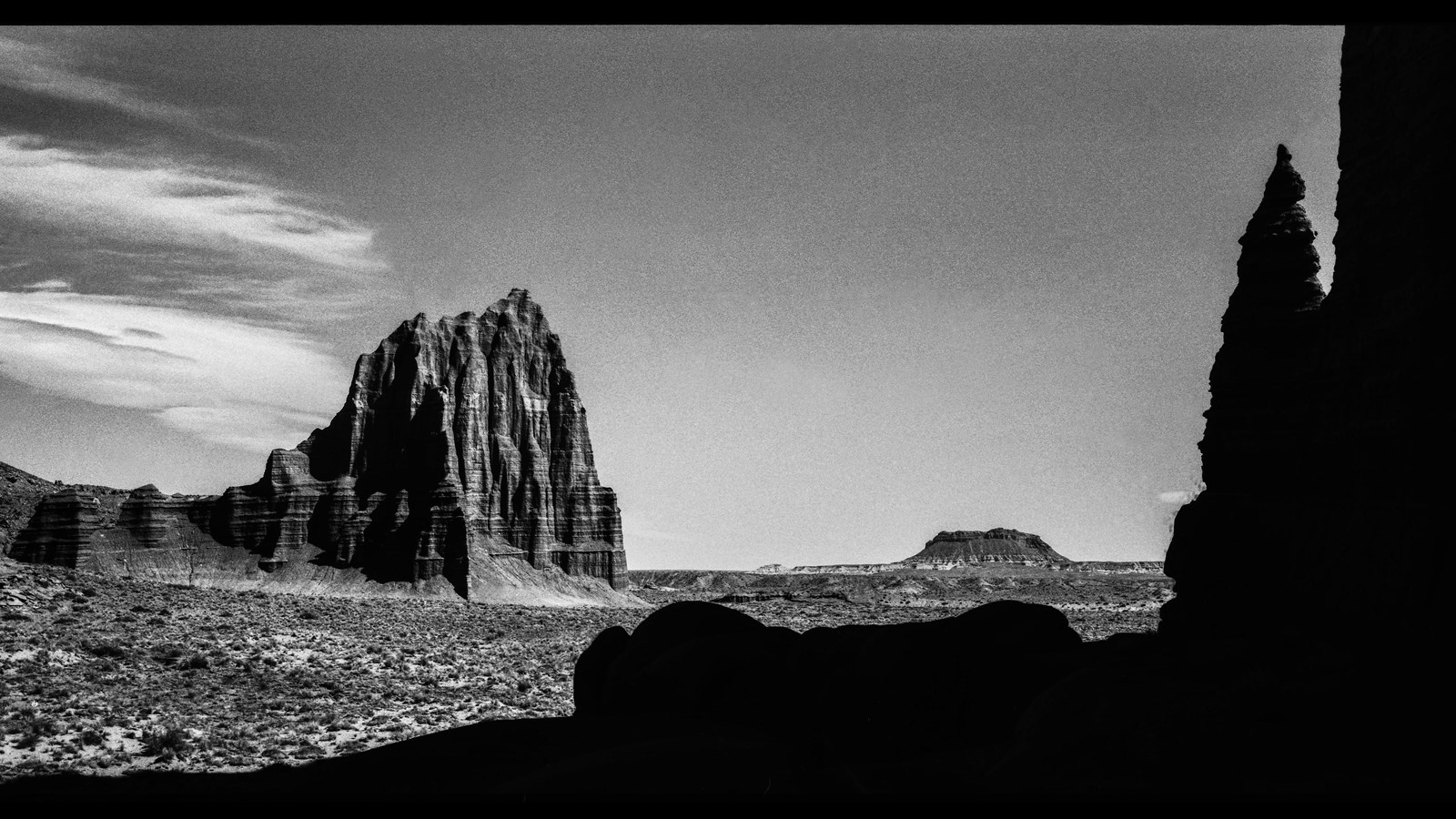Last updated: January 11, 2021
Place
Temple of the Sun and Temple of the Moon

NPS Artist-in-Residence Benjamin Rusnak
Parking - Auto, Scenic View/Photo Spot
Access to Temple of the Sun and Temple of the Moon requires a high clearance vehicle. Call 435-425-3791, press 1 for more information, and 4 for road conditions before visiting. Visit the Cathedral Valley page for more information and check the forecast. The roads through Cathedral Valley can become impassable when wet.
History
The first Europeans to see these large monoliths were probably members of John C. Fremont's 1853 expedition. Temples of the Sun and Moon were named by Charles Kelly, the first superintendent of Capitol Reef National Park. He promoted the geologic features of Cathedral Valley to be included inside the park boundaries. In the 1970s, President Lyndon B. Johnson expanded Capitol Reef to include Cathedral Valley.
Geology
The monoliths (large, freestanding rock formations) are composed of the earthy, buff-pink Entrada Sandstone. Deposited 160 million years ago in the Jurassic period, this fine-grained sandstone formed by the deposition of sand and silt in tidal flats. It crumbles easily to a fine sand which is rapidly removed by water; therefore, talus (debris) slopes do not form and Entrada cliffs tend to rise sheer from their base. Above the Entrada, the grayish-green sandstone and siltstone of the Curtis Sandstone forms a hard cap rock on some of the monoliths and higher cliffs and buttes, protecting them from erosion. Above the Curtis is the thinly-bedded, reddish-brown siltstone of the Summerville Formation.
Arches National Park’s arches are also formed in Entrada Sandstone.
Learn more about the geology of Cathedral Valley and Capitol Reef's Waterpocket Fold.
Regulations
-
While Capitol Reef is open 24 hours/day, car camping is limited to maintained campgrounds. Camping at Temples of the Sun and Moon is prohibited. Outside the park boundary on land managed by Bureau of Land Management, a dispersed camping area has developed.
-
Leave no trace of your visit. Vandalism is illegal.
-
Climbing is prohibited on Temple of the Sun and Temple of the Moon.
- Drones are prohibited.
- Be a good B.A.R.K. ranger with your pet.
